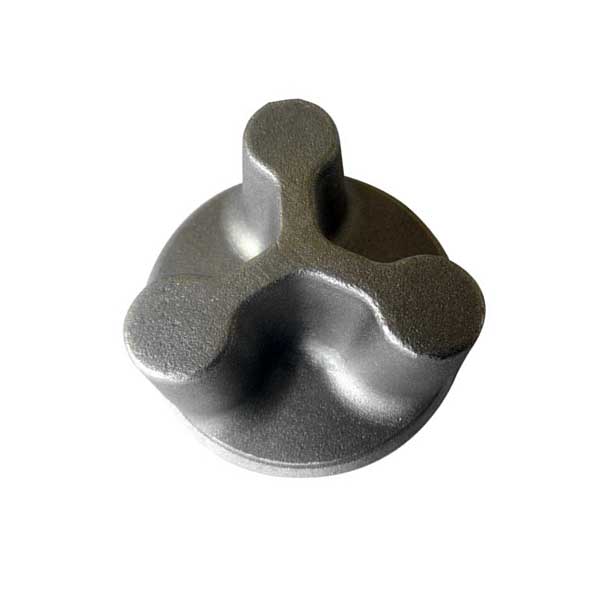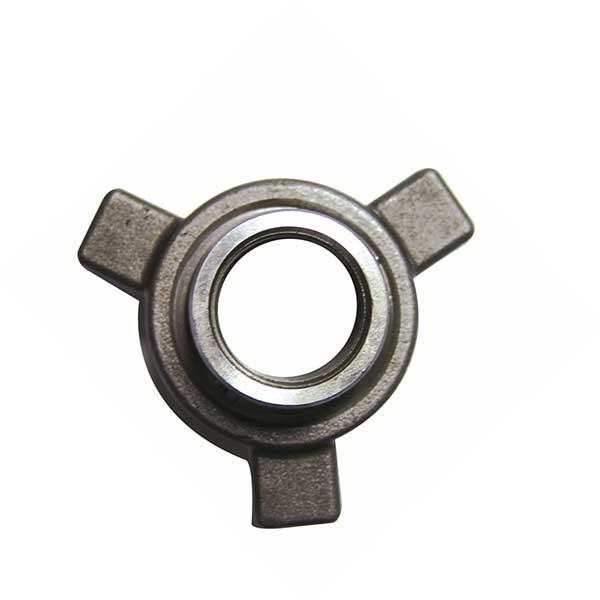Cold forging is a process in which metals are formed by forging at room temperature. Cold forging includes deformation forms such as upsetting, die forging and extrusion, and is a cold bulk forming. The cold forging process was developed from cold extrusion and gradually extended to cold die forging and cold precision forging.
Compared with hot die forging, the main advantage of cold forging is that the blank is not heated, so there are no forging dimensions and inherent quality problems caused by heating, and heating equipment is omitted. Cold forgings have high dimensional accuracy, small roughness values, reduce cutting, save materials and reduce costs, and are easy to realize mechanized and automated production. Therefore, it is widely promoted and applied in industries such as automobiles, motorcycles, bicycles, tractors, home appliances, textile machinery, military industry and aviation industry, and is expanding day by day.
Types of cold forgings
1. Extrusion: cold extrusion, which can be divided into positive extrusion, reverse extrusion and compound extrusion.
2. Upsetting category: cold upsetting can be divided into upsetting and partial upsetting
.
3. Die forging: It is finally formed by cold forging, which can be divided into small burr die forging and closed burr-free die forging.
4. Precision forging: cold precision bevel gear tooth profile, spline and straight tooth profile.

Cold forging process characteristics
Cold forging products are of good quality, processed at room temperature, with high dimensional accuracy, smooth surface and good mechanical properties. It can also process forgings with complex shapes, reduce cutting, save material consumption and reduce costs.
The deformation resistance is large, and measures to reduce the deformation resistance must be taken: adjusting the chemical composition of raw materials, pre-treatment of the blank, improving the deformation process, improving the hardness and finish of the mold, and controlling the pressurization speed of the equipment.
Cold deformation strengthening and thermal effect, in the process of cold forging, as the degree of deformation increases, the cold deformation strengthening phenomenon in which the strength and hardness of the metal also increase. Cold deformation strengthening can be used to strengthen the strength and hardness of the product and improve the mechanical properties.
Due to the conversion of mechanical energy into thermal energy, the temperature of the billet will increase, known as thermal effect. To control the billet temperature does not exceed 400 ℃.
The friction force is large, the cold forging deformation force is large, the unit pressure is also large, and the friction force between the metal and the die surface is also high, so the lubrication conditions must be improved to reduce the friction force.
Mechanization and automation, processing at room temperature, good labor conditions, easy to realize mechanization and automation, suitable for mass production.
The cold forging drawing is designed according to the part drawing, which is the main basis for formulating the process, designing the mold and checking the forging. According to the design characteristics, it is divided into cold extrusion and cold die forging design.

Design points of cold die forgings
1. Cold-forged or cold-extruded parts should be as axially symmetrical as possible to ensure that the metal flows evenly during the forming process.
2. Determine the shape, size, location and technical requirements of cold forging without cutting after direct forming according to the part drawing.
3. Parting surface: cold forgings can be divided into two forms: small burr open die forging and closed die forging. The position of the parting surface of the small burr is usually set on the largest diameter or the end face of the largest diameter.
4. Machining allowances and tolerances: After cold forging, no machining allowances will be made for the parts that are not machined, which are the same as the dimensions and tolerances of the parts drawing. There is no need to exact product accuracy for the remaining parts to be machined.
5. Ejection slope and fillet radius: During cold forging, an ejector is generally provided, and the ejection slope is about 0°~3°. The fillet radius is based on R2, and it can be increased or decreased according to the requirements of the part drawing. However, during cold forging, if the fillet is too large, it will affect the forming.
The main technical problem of using the cold forging process is that the metal has high strength in the cold state, and it has a strengthening effect during the deformation process. Focusing on this central issue, only effective measures can be taken from the aspects of raw materials, blank pretreatment, cold forging deformation process, molds and equipment, etc., in order to achieve success.


